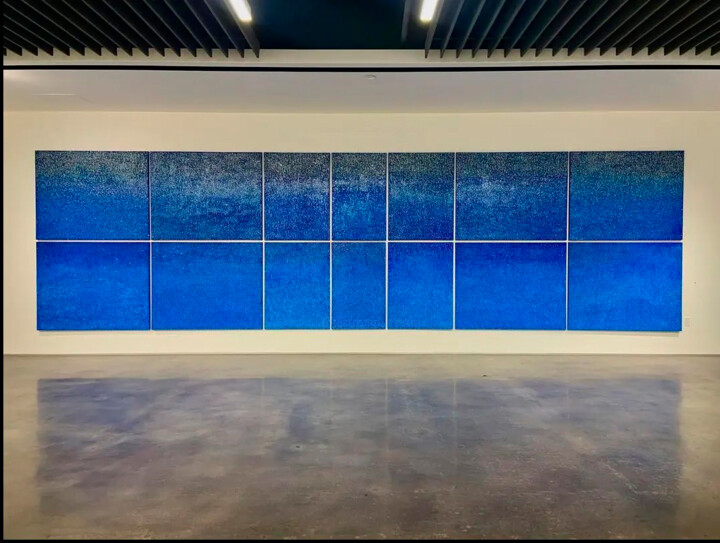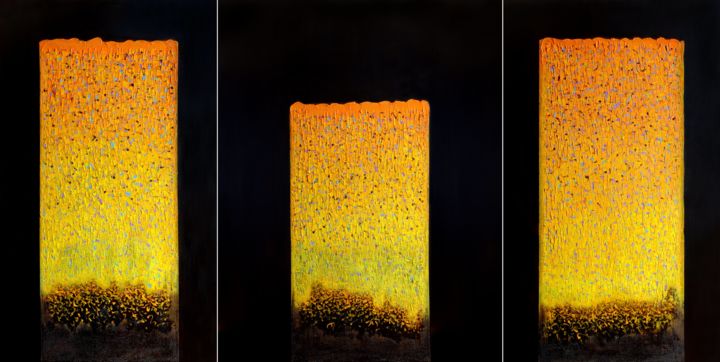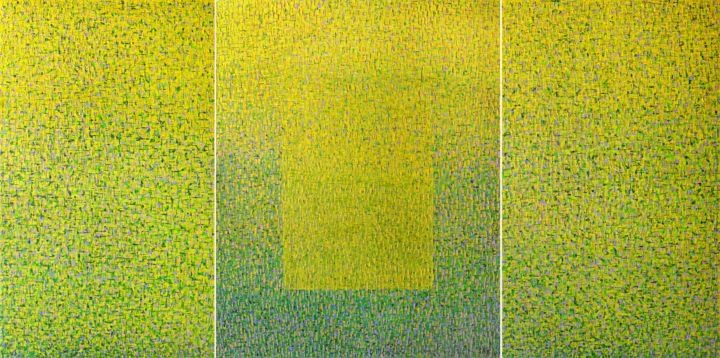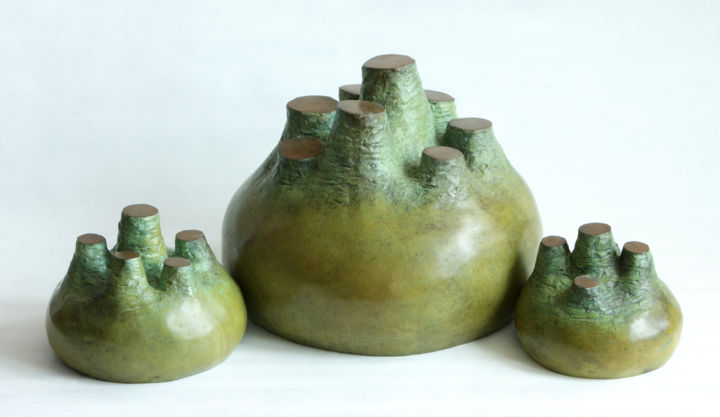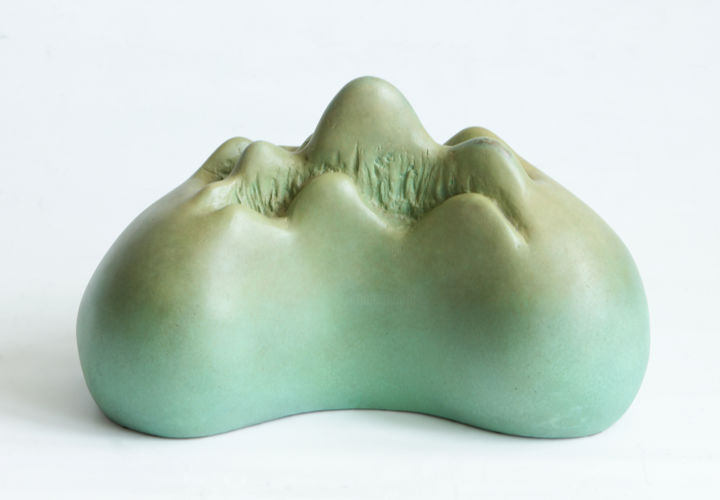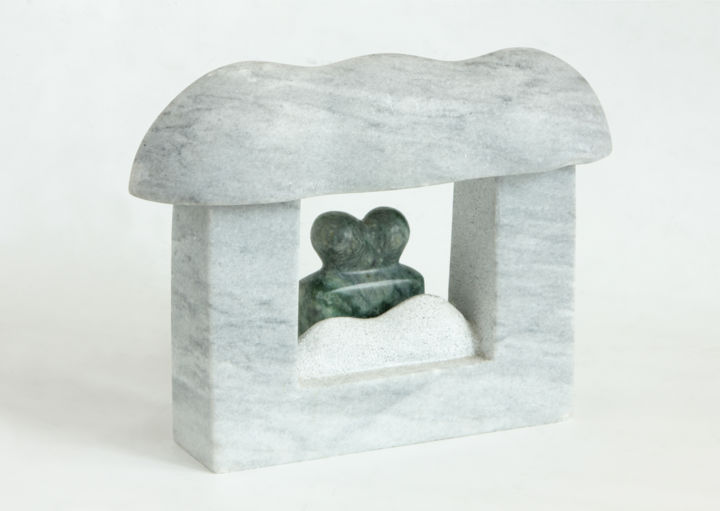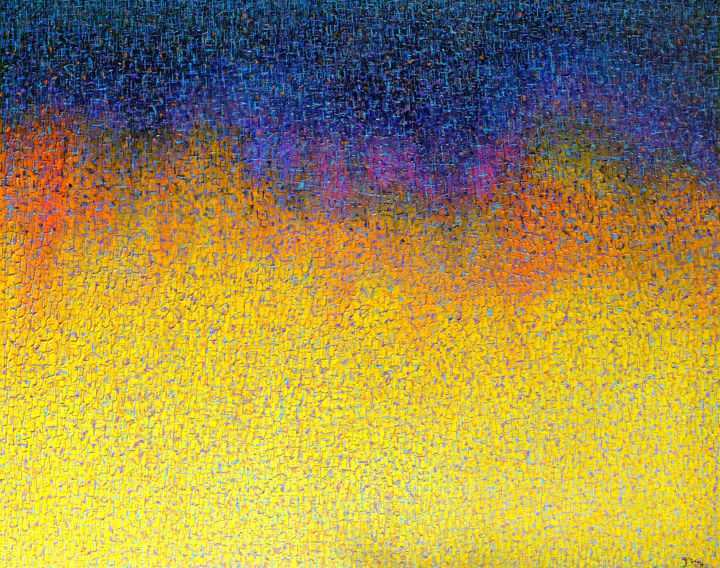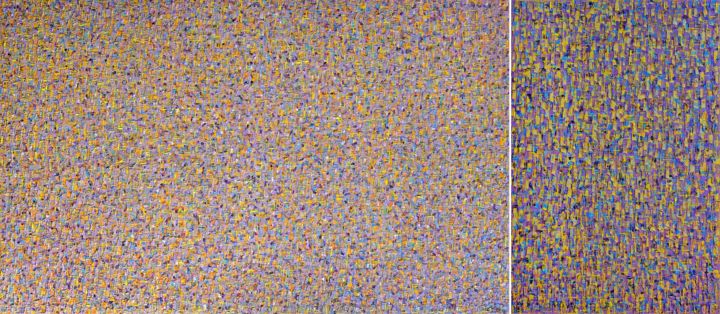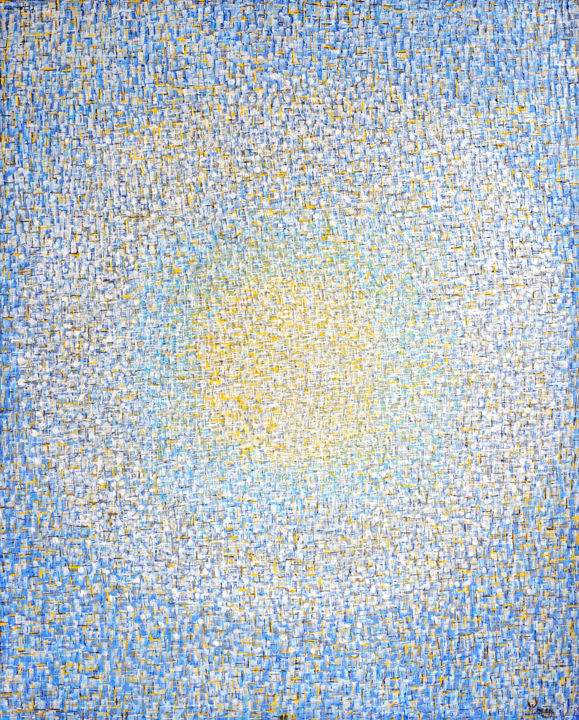Hyun Ae Kang
Hyun Ae Kang, a distinguished contemporary artist from South Korea, has emerged as a prominent figure in the global art scene. Her work, known for its vibrant and dynamic abstract compositions, seamlessly blends traditional Korean spirituality with Western abstract expressionism, creating a unique artistic language that resonates with a diverse audience. Kang's journey as an artist has been marked by continuous exploration and innovation, positioning her as a significant force in contemporary art.
Born in 1959 in South Korea, Kang's passion for art developed at a young age. She pursued her formal education in the arts, earning a BFA and MFA in sculpture from Ewha Womans University, one of Korea's most prestigious institutions. Early in her career, Kang's work predominantly explored themes of geometric modernism and organic abstraction, establishing her as a notable figure in the Korean art scene.
In 1993, Kang made a pivotal decision to immigrate to the United States, seeking to broaden her artistic horizons. This move marked a significant turning point in her career, as she began to transition from the subdued earth tones characteristic of her earlier work to a more vibrant and polychromatic palette. Influenced by American artists such as Mark Rothko, Robert Motherwell, and Helen Frankenthaler, Kang embraced a new approach that infused her work with bright hues and luminous textures. This shift not only distinguished her from the traditional aesthetic of the Dansaekhwa movement—a 1950s Korean monochrome movement known for its repetitive patterns and gestures—but also allowed her to develop a unique style that is distinctly her own.
Kang's American journey began in Southern California, where she quickly established herself as a rising artist despite having no prior connections to local galleries or museums. Her first American exhibition took place at the Cerritos Public Library in 1998, followed by several other shows in prestigious venues, including the Elizabeth Edwards Fine Art Gallery in Laguna Beach and Gallery 3 in Fullerton.
 Hyun Ae Kang - Spirit of Forest (2020). Oil and resin on canvas. 92 × 92 × 2.5 cm
Hyun Ae Kang - Spirit of Forest (2020). Oil and resin on canvas. 92 × 92 × 2.5 cm
Kang's work is not limited to painting alone; she has also explored other media, including sculpture and installation art. Her sculptures often utilize materials like bronze, onyx, and tattooed leather, while her installations incorporate glass, metal, and light to create immersive environments. These installations offer a tactile and sensory experience, engaging viewers in a dialogue with the artwork and its surrounding space.
Throughout her career, Kang has exhibited her work in numerous solo and group exhibitions across Asia, Europe, and North America. Her contributions to the art world have been recognized with various awards and honors, and her works are held in permanent collections at esteemed institutions such as the Art Museum of Seoul, the Muzeo Museum and Cultural Center in Anaheim, California, and the Brea Museum and Historical Society in California.
Today, Hyun Ae Kang continues to live and work in South Korea, where she remains an active and influential figure in the art community. Her work, celebrated for its emotional depth, technical skill, and innovative approach, continues to captivate audiences worldwide, cementing her legacy as one of the most prominent contemporary artists of her generation.
 Hyun Ae Kang - Cosmos VII (2019). Bronze and prite sculpture. 18 × 25 × 25 cm
Hyun Ae Kang - Cosmos VII (2019). Bronze and prite sculpture. 18 × 25 × 25 cm
Reimagining abstraction beyond Dansaekhwa
Hyun Ae Kang is renowned for her innovative approach to abstraction, blending traditional South Korean influences with a dynamic exploration of color and form. While her work is rooted in the Korean artistic tradition of Dansaekhwa—a movement known for its minimalist aesthetics and monochromatic austerity—Kang's art represents a significant departure from these conventions. Her work is not merely an extension of Dansaekhwa; it is a bold reinvention, characterized by a maximalist use of color and texture that sets her apart from her contemporaries.
Dansaekhwa, which emerged in late twentieth-century Korea, emphasizes a meditative and repetitive process in creating art. This approach is deeply influenced by East Asian philosophical traditions, particularly Taoism and Seon (Zen) Buddhism, and is reflected in the movement's minimalist techniques and monochromatic palettes. However, Kang diverges from this tradition by embracing a broader spectrum of colors and textures. While she shares the contemplative repetition found in Dansaekhwa, her work explores the full gamut of visual possibilities, from vibrant hues to intricate textures, thereby creating a rich, sensory experience for the viewer.
Kang's artistic vision is a harmonious blend of the theoretical and the natural. She often incorporates elements of sculpture into her paintings, using geometric shapes such as spheres and cubes and transforming them into amorphous, organic forms that exude a primordial energy. These forms, with their irregular and dynamic qualities, engage the senses and evoke a sense of the ancient and elemental, inviting viewers to explore the deeper connections between the physical and abstract realms.
 Hyun Ae Kang - Spring 5A20 (2020). Oil and resin on canvas. 121.9 × 152.4 × 2.5 cm
Hyun Ae Kang - Spring 5A20 (2020). Oil and resin on canvas. 121.9 × 152.4 × 2.5 cm
A key aspect of Kang's work is her masterful manipulation of materials. She juxtaposes contrasting elements such as burnished bronze with grainy wood, translucent marble with impenetrable obsidian, and polished stone with rugged, biomatter-like patches. This bold exploration of materiality reflects Kang's artistic philosophy of embracing material alterity to achieve a harmonious visual balance. Through these juxtapositions, she creates compositions that are not only visually striking but also rich in tactile and sensory experiences.
Kang's distinctive style is further defined by her dynamic and kaleidoscopic use of colors. While her early works, created in Korea, often featured muted earth tones, her more recent pieces burst with bright, vibrant hues. This shift towards a polychromatic palette can be attributed to her exposure to the works of American color-field artists during her time in the United States. Unlike these artists, who often use solid tones to express pure color, Kang adds depth and dimension by exploring the luminance of colors and experimenting with texture. She employs a technique that involves layering webs of overlapping brushstrokes of varying thicknesses and colors, drawing on divisionist color theory to juxtapose complementary hues. This technique enhances the luminosity of her works, creating an aura of glowing vibrancy.
Kang's use of impasto—a technique involving the application of thick layers of paint—adds further dimension to her paintings. The raised brushstrokes catch light in unique ways, giving her works a luminous quality as if they are emanating light from within. This effect is a stark contrast to the minimalist ethos of Dansaekhwa and other late twentieth-century art movements that seek clarity through reduction and elimination. Kang, instead, embraces a profusion of vibrant colors, radiant light, and visceral textures to convey the power of the sublime, overwhelming the viewer with a rich, sensory experience.
In summary, Hyun Ae Kang's work represents a vibrant and dynamic departure from the Dansaekhwa movement. Her innovative use of color, texture, and materiality sets her apart as a unique voice in contemporary art, offering a fresh and compelling perspective that bridges traditional Korean aesthetics with modern abstract expressionism. Through her art, Kang continues to explore the boundaries of abstraction, creating works that are not only visually stunning but also deeply engaging on an emotional and sensory level.
 Hyun Ae Kang - Grace 1J23 (2023). Oil and resin on canvas.
Hyun Ae Kang - Grace 1J23 (2023). Oil and resin on canvas.
The spiritual practice of Hyun Ae Kang
Hyun Ae Kang perceives art as an extension of her faith. Her deep Christian beliefs shape her artistic journey, not through direct religious symbolism but through an abstract engagement with the divine. Kang's work steers clear of overt religious icons or narratives, opting instead for an abstract expression that resonates with the idea that art can capture the mystery of the divine, echoing Kandinsky's notion of art as "an expression of mystery by means of mystery." For Kang, her art embodies "an expression of the infinite by means of the boundless," seeking to touch the sacred through non-traditional forms.
Kang views her creative process as a form of prayer and meditation, a contemplative practice aimed at connecting with the divine. In religious contexts, contemplation involves a range of practices designed to achieve a direct, experiential awareness of the divine. This practice has roots in Christian mysticism, drawing from ancient Greek philosophical concepts like theoria (beholding) and early mysticism's emphasis on transcendence. In this light, Kang's art can be seen as a modern-day exploration of these ancient traditions, offering viewers a spiritual experience.
 Hyun Ae Kang - Snow VIII-V (2018). Oil and resin on canvas. 101.6 x 76.2 x 5 cm
Hyun Ae Kang - Snow VIII-V (2018). Oil and resin on canvas. 101.6 x 76.2 x 5 cm
Her artistic method involves building layers of different media, each contributing to the overall texture and tone of the work. This meticulous layering includes an initial underpainting followed by layers of prayers. These prayers are composed of both written texts in Korean and symbolic marks that form part of her unique visual language. Kang paints these prayers with countless strokes, creating a layered effect that, while making individual elements unreadable, generates a resonant, luminous quality. This technique mirrors the repetitive mantras found in various religious traditions, including Christianity, Buddhism, and Hinduism, which are used to focus the mind and elevate consciousness.
Kang refers to her technique as a form of inscription, where each layer of paint adds to the spiritual depth of the artwork. This approach reflects her background in sculpture, as she often uses a chisel-like tool to apply paint, emphasizing the physicality of her process. This act of inscription is not just about adding material but about carving out a spiritual space within the work. Thomas Merton, a Trappist monk, described contemplation as a vivid realization that life and existence flow from an invisible, transcendent source. In this context, Kang's art offers a rare glimpse into such spiritual insights, making her work a unique blend of contemporary art and deep spiritual exploration.


 Selena Mattei
Selena Mattei

